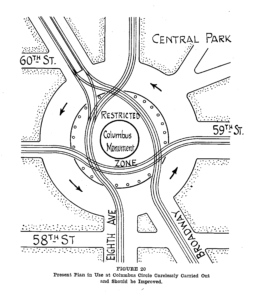It’s not difficult to imagine what American streets were like before William Phelps Eno. It was pure chaos. In New York City of the 1860’s, streets such as the famous Broadway were constantly clogged with horse-carriage traffic. In 1867, a young Eno was caught in a traffic jam that served as the genesis to the career of “the Father of Traffic Regulation.”
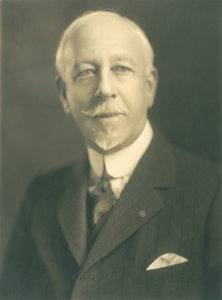
Reflecting on that traffic jam, Eno later wrote, “There were only about a dozen horses and carriages involved, and all that was needed was a little order to keep the traffic moving. Yet nobody knew exactly what to do; neither the drivers nor the police knew anything about the control of traffic.”
Eno was born in 1858 in New York City and spent the first nine years of his life on East Twenty-third Street in Manhattan. In 1867, Eno, the youngest in his large family, set sail to Europe to visit France, Italy and England. After returning to the United States in 1869, the young Eno would finish his primary and secondary schooling at over a dozen institutions, including those he attended in France. At Yale University, Eno made average grades and had a bout of Scarlet Fever, but eventually graduated with a Bachelor of Arts.
Unlike many of today’s graduates, Eno did not go directly into traffic regulation, as there was no such discipline yet established. Instead, Eno worked at his father’s real estate firm in New York, where his father, Amos, gave him millions of dollars. It was with this money that Eno was able to give up his real estate career in 1899 to devote the rest of his life to traffic regulation.
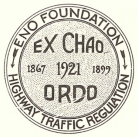
After missing the opening of an opera performance in New York due to heavy traffic, Eno lobbied for his first traffic innovation. This first innovation was an early electric traffic signal that used numbers to indicate which carriage would drive up to the Metropolitan Opera, which reduced confusion.
An article submitted by Eno to The Rider and Driver in 1900 would result in the first written New York traffic regulations, which promoted the smooth flow of horse and vehicle traffic. Some of the ideas proposed in the article are still absolutely fundamental to how people get from A to B in cities across the world. Eno proposed turn signals, slowing and stopping signals and the idea that vehicles should stay to one side of the street (right-hand side in America).
One of the most important aspects of Eno’s regulations was that his “Rules of the Road” should be well understood by both police officer and driver. He suggested that traffic regulations, including speed limits and right-of-way laws, be publicly posted. Eno also proposed that the police should have someone to manage street traffic to record information about accidents, provide driver’s exams and licenses among other tasks considered essential today.
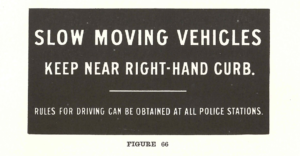
It’s not as if everyone was on board with Eno’s “Rules of the Road,” but eventually, cities all over the world adopted Eno’s ideas to make traffic flow smoother. In 1902, New York got their first traffic police, the “Apollo Squad,” around the same time that the city was posting their first traffic signs. Eno would also take his efforts to Europe.
In 1921, Eno established “The Eno Foundation for Highway Traffic Regulation, Inc.” This organization served to create traffic regulation, assist the traffic police and to make recommendations about road infrastructure. The organization was established at Eno’s “Judah Rock” estate in Westport, Connecticut. After several name changes throughout the twentieth century, the organization became the Eno Center for Transportation we all know and love today.
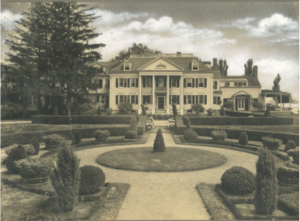
In 1945, Eno had died, living 87 years. Though recognized as the Father of Traffic Regulation, William Phelps Eno was a dedicated equestrian and never knew how to drive a vehicle despite his honorary driver’s license.
The rotary (traffic circle), the one-way street, the interstate highway system and even the subway, might have come about eventually without Eno. However, no one objects that William Phelps Eno did more for the world of traffic control than any other single person. He changed the way we get from A to B forever and for the good.
